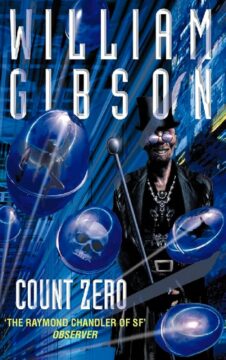Harmony Holiday at the Paris Review:
 Prisons are American tourist attractions, and criminals who become fugitives or inmates our outlaw heroes—Al Capone, Alcatraz, Charles Manson, Sing Sing, Angola, Luigi Mangione, O. J. Simpson, Diddy, né Sean Combs. A collective underdog fetish means that the image of a civilian outwitting, outrunning, or confronting “the man” is enough to negate his trespasses. Maybe achieving the apotheosis of success in the United States requires becoming a convict, being threatened with or facing real incarceration and exile, doing time, paying dues, and making a grand comeback. At that finale you can sell that story to restore your fortunes, dignity, and maverick glory. Combs is the latest public figure to go from celebrated to disgraced to tentatively redeemed in some eyes by a show trial and the masculine compulsion to cheer when men get away with terrorizing women. The rapper Jay Electronica stood outside of the courtroom with his two Great Danes on the day the verdict was delivered, and announced, “I’m just here supporting my brother.” He looked half-ashamed, half-deviant about it, like he was both courting and afraid of backlash. Others call Diddy’s comeuppance a legal lynching, insinuating he’s a survivor of a because-he’s-black character assassination, since other powerful, abusive men have yet to be held accountable. It’s a truly American malfunction, this belief that the once oppressed should have the freedom to become as evil and ruthlessly decadent as their oppressors. This is what is sold to the public as prestige, and imitations of it exist at every stratum. With this in mind, Diddy’s story could be construed as a bootstraps tale—from Harlem to Howard to Hollywood endings. His recent downward spiral might be just another buoy, one that will help him ascend anew.
Prisons are American tourist attractions, and criminals who become fugitives or inmates our outlaw heroes—Al Capone, Alcatraz, Charles Manson, Sing Sing, Angola, Luigi Mangione, O. J. Simpson, Diddy, né Sean Combs. A collective underdog fetish means that the image of a civilian outwitting, outrunning, or confronting “the man” is enough to negate his trespasses. Maybe achieving the apotheosis of success in the United States requires becoming a convict, being threatened with or facing real incarceration and exile, doing time, paying dues, and making a grand comeback. At that finale you can sell that story to restore your fortunes, dignity, and maverick glory. Combs is the latest public figure to go from celebrated to disgraced to tentatively redeemed in some eyes by a show trial and the masculine compulsion to cheer when men get away with terrorizing women. The rapper Jay Electronica stood outside of the courtroom with his two Great Danes on the day the verdict was delivered, and announced, “I’m just here supporting my brother.” He looked half-ashamed, half-deviant about it, like he was both courting and afraid of backlash. Others call Diddy’s comeuppance a legal lynching, insinuating he’s a survivor of a because-he’s-black character assassination, since other powerful, abusive men have yet to be held accountable. It’s a truly American malfunction, this belief that the once oppressed should have the freedom to become as evil and ruthlessly decadent as their oppressors. This is what is sold to the public as prestige, and imitations of it exist at every stratum. With this in mind, Diddy’s story could be construed as a bootstraps tale—from Harlem to Howard to Hollywood endings. His recent downward spiral might be just another buoy, one that will help him ascend anew.
more here.
Enjoying the content on 3QD? Help keep us going by donating now.

 One morning in 2009, Jacqueline Tabler woke up with the solution to a laboratory problem that had been plaguing her for months. She got out of bed, grabbed her notebook, and started sketching out an experiment that had come to her in a dream.
One morning in 2009, Jacqueline Tabler woke up with the solution to a laboratory problem that had been plaguing her for months. She got out of bed, grabbed her notebook, and started sketching out an experiment that had come to her in a dream. O
O On 14 July 1960, 65 years ago this week, a young English woman with no formal scientific background or qualifications stepped off a boat at the Gombe Stream Game Reserve in Tanzania to begin what would become a pioneering study of wild chimpanzees. Her discoveries would not just revolutionise our understanding of animal behaviour but reshape the way we define ourselves as
On 14 July 1960, 65 years ago this week, a young English woman with no formal scientific background or qualifications stepped off a boat at the Gombe Stream Game Reserve in Tanzania to begin what would become a pioneering study of wild chimpanzees. Her discoveries would not just revolutionise our understanding of animal behaviour but reshape the way we define ourselves as  It’s not that anyone ever said sophisticated math problems can’t be solved by teenagers who haven’t finished high school. But the odds of such a result would have seemed long.
It’s not that anyone ever said sophisticated math problems can’t be solved by teenagers who haven’t finished high school. But the odds of such a result would have seemed long. I have had early access to GPT-5
I have had early access to GPT-5 Governments, social scientists, public health officials, and others have grown concerned about a possible “loneliness epidemic.” They paint a picture that looks a bit like this: old people staring wistfully out the window, young men growing radicalized online, teenagers glued to their phones, missing real-life connections. It’s a worrying portrait. But what we’re facing isn’t a loneliness epidemic. It’s something much worse.
Governments, social scientists, public health officials, and others have grown concerned about a possible “loneliness epidemic.” They paint a picture that looks a bit like this: old people staring wistfully out the window, young men growing radicalized online, teenagers glued to their phones, missing real-life connections. It’s a worrying portrait. But what we’re facing isn’t a loneliness epidemic. It’s something much worse. Will Storr, author and fellow Substacker,
Will Storr, author and fellow Substacker,  Severe allergic reactions can be swift and deadly. Two new studies of mice, published August 7 in Science, reveal a key step in this terrifying cascade. What’s more, these findings hint at a drug to prevent it. Anaphylaxis
Severe allergic reactions can be swift and deadly. Two new studies of mice, published August 7 in Science, reveal a key step in this terrifying cascade. What’s more, these findings hint at a drug to prevent it. Anaphylaxis  What makes Gibson’s portrait of great cities thought-provoking is that, despite all this change, he imagines them persisting at all, in some ways operating no worse than the worst that can be found today. This situation becomes all the more thought-provoking when we see how he links the fate of his cities to the fate of the modern project itself, whose deep impact on making cities what they are today will persist into the future.
What makes Gibson’s portrait of great cities thought-provoking is that, despite all this change, he imagines them persisting at all, in some ways operating no worse than the worst that can be found today. This situation becomes all the more thought-provoking when we see how he links the fate of his cities to the fate of the modern project itself, whose deep impact on making cities what they are today will persist into the future. For many months, the only place in New York City still showing Pedro Almodóvar’s most recent film—his first English-language feature,
For many months, the only place in New York City still showing Pedro Almodóvar’s most recent film—his first English-language feature,  For the last two and a half years, since the release of ChatGPT, I’ve been suffering from fits of dread. It’s not every minute, or even every day, but maybe once a week, I’m hit by it—slackjawed, staring into the middle distance—frozen by the prospect that someday, maybe pretty soon, everyone will lose their job.
For the last two and a half years, since the release of ChatGPT, I’ve been suffering from fits of dread. It’s not every minute, or even every day, but maybe once a week, I’m hit by it—slackjawed, staring into the middle distance—frozen by the prospect that someday, maybe pretty soon, everyone will lose their job.